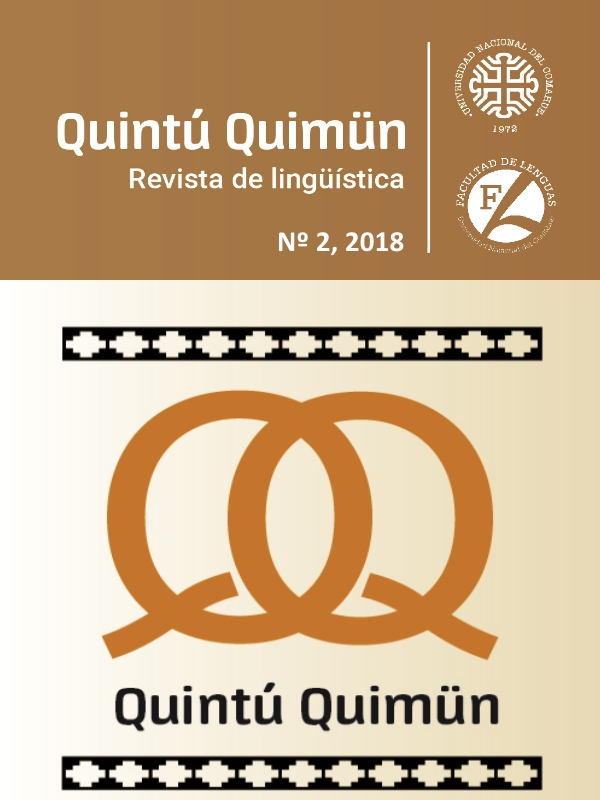Telicidad y alcance en las frases nominales / Telicity and scope of Spanish NPs
Contenido principal del artículo
Resumen
En este trabajo nos proponemos revisar la propuesta configuracional de la telicidad que supone que la interpretación de un evento télico está asociada a una determinada proyección sintáctica (ubicada por encima de SV en la estructura sintáctica) a la que el objeto debe ascender (Kratzer, 2004; Thompson, 2006). Esta hipótesis es incompatible con ciertos trabajos en los que se estudia una correlación entre la ubicación sintáctica de los SN y su alcance (Diesing, 1992; López, 2012) y en los que se propone que los SN ascendidos tienen alcance necesariamente amplio. El objetivo de este artículo es presentar un modelo de cálculo de la telicidad que conserve la idea de que la información sobre la telicidad del evento está asociada a una proyección sintáctica, pero sin que esto conlleve el ascenso del objeto. Proponemos que la proyección Sα (López, 2012), de carácter obligatorio, contiene información sobre la telicidad del evento. En términos de su semántica, α es una función con dos posibles denotaciones, según el contexto sintáctico: puede ser una función de identidad, si se combina con plurales desnudos o puede ser una función parcial con un requerimiento de culminación, si se combina con indefinidos singulares.
ABSTRACT
In this article we revise the configurational proposal to telicity that states that the interpretation of a telic event is associated with a particular syntactic projection (above VP in the syntactic structure) where the object raises (Kratzer, 2004; Thompson, 2006). This hypothesis is not compatible with some previous work that argues for a correlation between the syntactic position of NPs and their scope (Diesing, 1992; López, 2012) and for obligatory wide scope of NPs that move out of VP. The aim of this article is to present a calculation model of telicity that preserves the association between information on the telic event and its syntactic position. Furthermore, we claim that the object does not move. Concretely, we propose that the αP projection (López, 2012), which is obligatory, contains information on the telicity of the event. In semantic terms, α is a function with two possible denotations depending on the syntactic context. On the one hand, it can be an identity function, when it combines with bare plurals; on the other hand, it can be an identity function with the requirement of culmination, when combined with singular indefinites.
Descargas
Detalles del artículo
Los autores de los artículos publicados conservan los derechos de copyright.
Licencia de uso:

Creative Commons Atribución-NoComercial-CompartirIgual 4.0 Internacional.
Citas
Borer, Hagit (2005). The normal course of events, volumen 2. Nueva York: Oxford University Press.
Carlson, Greg (1977). Reference to kinds in English. Tesis doctoral, Universidad de Massachusetts.
Chomsky, Noam (1995). The minimalist program. Cambridge, Massachusetts: MIT Press.
Chung, Sandra & William A. Ladusaw (2004). Restriction and saturation (Vol. 42). Cambridge: MIT press.
Diesing, Molly (1992). Indefinites, MIT Press.
Diesing, Molly, & Jelinek, Eloise (1995). Distributing arguments. Natural Language Semantics, 3(2), 123-176.
Heim, Irene & Angelika Kratzer (1998). Semantics in generative grammar. Oxford: Blackwell.
Kiparsky, Paul (1998). Partitive case and aspect. En Miriam Butt & Wilhelm Geuder (eds.) The projection of arguments: Lexical and compositional factors, 265– 308. CSLI.
Kratzer, Angelika (1996). Severing the external argument from its verb. En Rooryck, J., y L. Zaring (eds.). Phrase structure and the lexicon (Vol. 33). Dordrecht: Springer Science & Business Media.
Kratzer, Angelika (2004). Telicity and the meaning of objective case. En Jacqueline Guéron & Jacqueline Lecarme (eds.) The syntax of tense, 389–423. Cambridge, Massachusetts: MIT Press.
Krifka, Manfred (1992). Thematic Relations as Links between Nominal Reference. En Ivan A. Sag & Anna Szabolcsi (eds.) Lexical Matters,, 29–54. Stanford, California: Center for the Study of Language and Information.
López, Luis (2012). Indefinite objects: Scrambling, choice functions, and differential marking. MIT Press Cambridge.
Parsons, Terence. (1990). Events in the Semantics of English. Cambridge: MIT Press.
Tenny, Carol (1994). Aspectual roles and the syntax-semantics interface (Vol. 52). Dordrecht: Kluwer Academic Publishers.
Thompson, Ellen (2006). The Structure of Bounded Events. Linguistic Inquiry 37:211–228.
Trebisacce, Romina (en preparación). La incidencia de la sintaxis y de la estructura argumental en la interpretación télica de los eventos. Tesis doctoral, Universidad de Buenos Aires.
Vendler, Zeno (1957). Verbs and Times, The Philosophical Review, Vol. 66, No. 2, pp. 143-160.
Verkuyl, Henk (1972). On the Compositional Nature of the Aspects. Dordrecht: Springer Science & Business Media.
Verkuyl, Henk (2005). Aspectual composition: Surveying the ingredients. En Perspectives on aspect, 19–39. Springer.
Wood, Jim (2015). Icelandic morphosyntax and argument structure (Vol. 90). New York: Springer.
Wood, Jim. & Alec Marantz (2017). The interpretation of external arguments. En Roberta. D’Alessandro, Irene Franco & Ángel. Gallego (eds.). The Verbal Domain, Oxford University Press.
